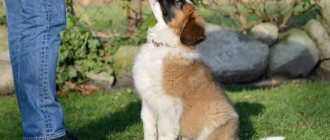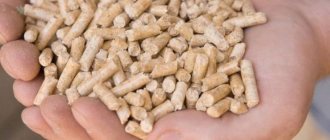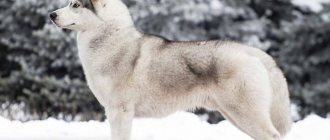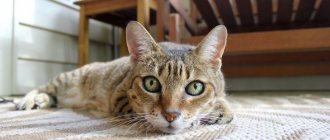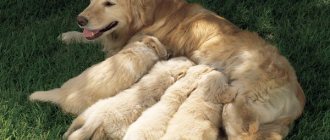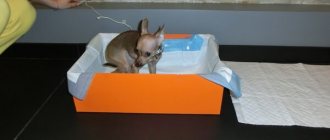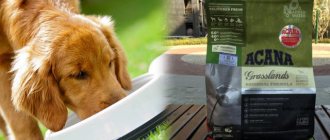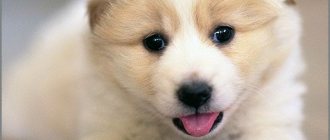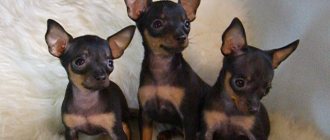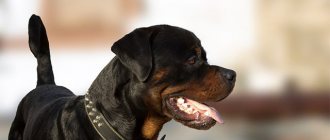Preparing the apartment
A puppy is a pet that is ideal for keeping at home
To prevent the dog from harming itself while at home, you need to plan everything in advance. When preparing the apartment, you need to do the following:
- Remove from the floor all objects that could harm your pet. These could be pins, buttons or paper clips.
- Hide electrical wires. They need to be put in a special box so that the dog cannot chew them.
- Remove magazines and books. French bulldogs, bull terriers and some other dogs often damage paper products. Therefore, if a puppy appears in the house, you need to put all books and magazines in the closet and hide them from the dog.
Important! You need to prepare housing before the puppy arrives in the house.
What you need to prepare in the house before the puppy arrives
Knowing what needs to be prepared in the house before the puppy arrives, you can prevent the occurrence of most problems, make caring for your pet easier and make his stay comfortable and safe. To do this, you should purchase a special bed or bedding, care items, food, toys, and a minimum set of medications. It is advisable to remove all carpets and rugs from the floor so as not to be nervous about the puddles that appear on them.
Important Safety Instructions
Puppies are curious creatures that need to test their teeth on all the objects around them. And since many of them pose a threat to life, you should follow important safety rules by removing the following things from the floor and other accessible places:
- household chemicals, varnishes, paints and other toxic drugs;
- wires;
- threads;
- buttons, baby mosaics, beads and other small objects that the baby can swallow or inhale;
- medicines;
- floor candles;
- products made of foam plastic and foam rubber;
- cutting and piercing objects;
- plastic bags;
- shoes and clothes.
If there is a small child in the family, then you need to make sure that there is no diaper in the pet’s access area. He may rupture it and swallow the gel-like filler.
Important! When removing “dangerous” things, do not forget about the computer system unit, which often stands on the floor or on the bottom shelf of the table.
Choosing a place to feed
From the first days, the puppy must be taught to consume food in one place. To do this, you need to buy 2 bowls in advance (for food and water).
Important! Arching your back when feeding can lead to curvature of the spine and sagging of the abdomen. This is especially true for dachshunds, mastiffs and other dogs with long bodies. To avoid this, you should place the bowls on a special stand or a small elevation at the level of the shoulder joints.
When choosing a place for feeding, you must follow the rules of hygiene. For small, smooth-haired dogs, you can designate a corner in the kitchen. But for representatives of large and long-haired breeds, a corridor is more suitable. This will prevent hair from appearing on the table, dishes and prepared food.
The floor surface in the feeding area should be free of rugs and paths so that it can be easily washed and disinfected if necessary.
Note! Food left after feeding should be immediately put into the refrigerator, but clean water should be available at all times.
Place to sleep
You can equip a place to sleep with a basket, a lounger or a thick bedside rug. On the first day, the baby is afraid to be alone in the dark in an unfamiliar house, so at night he should be left in the bedroom near the bed. Of course, you need to be prepared for a sleepless night, as the puppy will whine, look for mom, bark, and scratch the floor and door. In this case, you should get up, take him in your arms (but not into bed), stroke him and calm him down, and when going to bed, turn on the night light .
In the future, it is necessary to allocate a specific place for the dog where it will sleep and rest. Central heating radiators or heating devices should not be placed nearby, and there should be no drafts in the room.
Toys
To prevent your puppy from starting to chew shoes, upholstery and wallpaper out of boredom, he must have his own toys. You should not buy rubber and plastic figures in a regular children's store, as he can tear them with his teeth, injure the oral cavity and swallow small pieces. The same applies to soft toys that cannot withstand the “onslaught” of sharp teeth.
There are toys intended for indoors and outdoors.
Street ones include:
- rubber balls;
- Frisbee;
- skittles;
- rubber or plastic rings.
Home entertainment items include vinyl and latex bones, animals, and balls that can be chewed and rolled on the floor. Some dogs like toys that make sounds when pressed.
During the period of teeth change, puppies will find toys made from dried veins, which they will chew with pleasure.
It is better to immediately buy several toys of different shapes and materials, and then alternate them. In this way, you can easily calculate which object your baby likes to play with more than others.
Some dogs enjoy playing with soft toys. But they must be washed often and replaced as they become unusable.
Collar and harness
When choosing between a collar and a harness, you need to take into account the breed of your pet, its temperament and purpose.
For miniature dogs (Yorkshire terrier, Italian Greyhound, Chihuahua, etc.), which, due to fragile cervical vertebrae, are contraindicated for additional load in the form of a collar, a harness is suitable. This group also includes puppies of breeds characterized by a shortened muzzle structure (pugs, sharpeis, bulldogs, Pekingese).
For other dogs, the best option would be a walking collar made of high-quality materials and equipped with a soft padding that prevents compression of the neck.
As the puppy grows, he will need a training collar equipped with special half-rings or loops for maximum control and management on the part of the owner or instructor.
Why moving is stressful for a dog
Depression often appears in dogs after moving.
Few people understand that moving to a new place is always a stressful situation for a dog. After all, the dog used to spend all its time with its mother, sisters and brothers. However, when a pet finds itself in an unfamiliar environment, it begins to feel unprotected. This is why many puppies in a new home begin to cry, whine and act restless.
Many people don't know what they should do when their dog whines around the house. There is no need to try to calm her down, play with her or feed her. You just need to give her a little time to get comfortable and get used to the unfamiliar environment.
At what age is it recommended to take a puppy away from its mother?
When getting a dog for the first time, owners want to know at what age it is recommended to take the puppy away from its mother.
Experts say the earliest weaning period is 8 to 10 weeks. By this time, puppies that receive a sufficient amount of mother's milk develop artificial immunity, milk teeth appear, the intestines are populated with microflora, and certain rules of behavior are developed.
Note! Naturally fed puppies double their body weight in one week, while bottle-fed puppies will take two weeks.
- In some cases, dog experts advise taking slightly older puppies at the age of 4-5 months. This applies to families with small children. Without calculating their strength, they can accidentally injure a defenseless creature.
- It will be easier for older people to cope with a baby who is accustomed to a certain diet, a toilet, who knows his place and a few simple commands.
- It is easier for owners choosing “show” dogs to evaluate the puppy’s exterior features, which appear at six months of age.
A puppy appeared in the house: where to start?
When a dog appears in the apartment, you must immediately begin arranging a special place for him. Experienced dog handlers recommend placing puppies in places that meet the following criteria:
- Location away from heating radiators and drafts. The dog should feel cozy and comfortable so that nothing bothers it.
- Sufficient amount of free space. You cannot provide your pet with a place to rest close to the furniture.
Important! The resting place should be comfortable for the dog. It needs to be equipped with a special bed so that the dog can rest on it. You also need to provide bowls for food and water.
If there are already animals in the house
Problems with the puppy's adaptation may arise if there are already animals in the house. In this case, the owner must have certain knowledge and be patient in order to make friends with their pets.
Cats
The acquaintance and adaptation of a newly born puppy and a cat already living in the house should follow a certain pattern.
- For the first 2-3 days, the puppy should be kept in a separate room, avoiding contact with the cat.
- Release the puppy, giving him the opportunity to explore all the premises. At this time, the cat must be removed from the house.
- Return the pets to their places and let the cat get used to the foreign smell.
- Place the puppy in a transparent container or box with small holes through which he cannot escape. Bring the cat into the room and allow it to examine and sniff the new pet.
- If the animals have not shown aggression towards each other, then you can get to know them better. To do this, you need to ask someone to hold the puppy on a leash and hold the cat with your hands, not allowing you to approach at a “dangerous” distance. In most cases, 3-4 such sessions are required for complete adaptation.
Next, you should allow pets to be in the same room in the presence of their owners. Once you are sure that they are used to each other's company, you can leave them alone.
Important! You cannot bring a puppy if there is a nursing cat with kittens in the house. While protecting her offspring, she will show aggression and may injure her new pet.
Other dogs
If there are other dogs in the house, you should agree in advance with the owner of the puppy about the possibility of returning it in the event of a discrepancy in character.
Dog experts advise carrying out the first acquaintance on neutral territory in order to balance the chances of both sides. After letting the dogs examine and sniff each other, you can take a short walk together, after which you can go home.
Even if the older dog does not show aggression towards the newcomer, you should not leave them alone for the first 2-3 days. And only after making sure that there is no danger to the baby’s health can you entrust his partial upbringing to an adult animal.
Rodents and birds in cages
If rodents and birds already live in cages in the house, then after the puppy arrives, they should not be allowed to move freely around the room.
At first, the cages should be placed on high pieces of furniture where the puppy cannot reach, and when leaving the house, it is better to take them to another room.
You need to be especially careful with representatives of hunting breeds, since for them all small animals are potential prey.
How to calm a puppy
Toys will help the dog calm down after the move.
On the first day and night after the move and change of owner, the puppy will experience severe stress. In order for the dog to calm down faster, the owner must create the most comfortable environment for him in his new home. In this case, you need to adhere to the following tips:
- It is necessary to prepare a soft toy for the dog in advance. It will help the dog feel calmer in his new home.
- There is no need to constantly disturb the puppy. In the first days of his stay in a new place, he should sleep and rest.
- On the first night, the dog should sleep on its own bed. You can lay a diaper nearby so that the dog can go to the toilet.
What to feed a puppy for the first days
The owner should decide in advance what to feed the puppy for the first days and purchase the necessary products or ready-made food.
You should not start complementary feeding with dry ready-made food. In the first days, it is better to give preference to ready-made canned food and pates. Some experts allow feeding dry granules soaked in warm water, broth or milk.
Important! The quality of feed should be no lower than super premium class. Optimally, you need to choose holistic people.
If you decide to feed your puppy natural products, you should include in the menu:
- dietary meats;
- porridge made from buckwheat, brown rice or low-glycemic oats;
- dairy products;
- boiled carrots and zucchini;
- fish fat;
- boiled eggs.
Vitamin and mineral complexes selected according to the animal’s age should be added to the diet, but river fish and whole cow’s milk should be avoided.
Toilet training
Newspapers can be used instead of diapers when arranging a litter box for your puppy
Many people who have taken home a puppy do not know what to do next.
First you need to toilet train him. It is necessary to place newspapers, diapers or install a special tray for dogs near the house. It is recommended to soak a piece of paper in urine and leave it in the designated area for the toilet. This way, the dog will be able to understand by smell where it needs to relieve itself.
Rules for organizing a toilet
There are several rules for organizing a toilet for a puppy, which make it possible for him to develop an understanding that he must do his “wet” business in a certain place.
Knowing that dogs feel the need to defecate immediately after sleeping and feeding, at this moment you should take it outside or put it in a tray (on a diaper, newspaper). If the pet has done everything correctly, then it should be rewarded with stroking and kind words.
As a result of repeated repetitions, the puppy will develop an instinct, and he will stop relieving himself in different places.
Experts do not recommend shouting at pets, much less using physical punishment, as this causes panic and fear in children of the very act of urination and defecation.
As a toilet, you can use numerous types of ready-made trays, rubberized or absorbent diapers, pieces of fabric, containers with sand or other hygroscopic filler.
If we are talking about large dogs, then they should immediately be taught to go to the toilet outside.
The puppy’s first day in a new home: where to start walking
You need to take your dog for walks every day.
Before you start walking your pet, you need to talk to the breeder and find out from him whether he has been vaccinated. The dog can be taken outside only after vaccination.
You need to prepare in advance for walks in the fresh air. You need to accustom your dog to a leash and teach him basic commands. You should walk with a small dog in quiet and deserted places.
Some people decide to have a small puppy in the house. However, before you do this, you need to figure out how to properly transport the dog and care for it.

